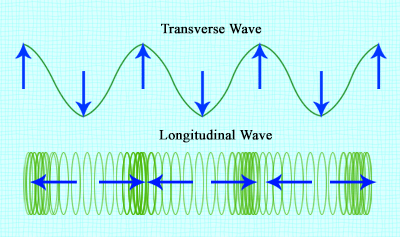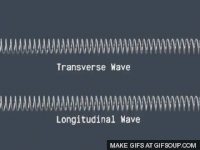The Physics of Sound
Daily we are bombarded by hundreds of sounds that shape our daily lives. From the irritating sound of your alarm clock waking you by 5 AM when it felt you just had an hour's sleep to the sound of the newborn baby living downstairs, to the blaring siren often used by a power-drunk politician, to the beep of your phone signifying your best friend's text message arrival. We live in a world where sound surrounds us.

Pexels Image
The different little cues made by sound help shape our daily lives by giving us alerts on what is happening in our vicinity.
Apart from the cues, the study of sound is critical to scientists, both engineers and biologists. It helps the engineers design audio electronics like the microphone, earphone and speakers. Those in the medical field get more in-depth understanding of the auditory canal of the human.
Biologists are also able to use the study of the science of sound to figure communication in underwater mammals like the whale sonar communication. On land, like the elephant's long-distance sonar communication.
Sound
The sound is a wave that travels through the various medium such as water, air, metal, gas, etc.
The physics of wave could then be applied to the sound since it is a wave.
The waves that can propagate through a material medium such as gas, liquid, or solid at a speed that is dependent on the material of travel (its inertial or elastic properties) are known as the mechanical wave.
Mechanical waves are of two types: transverse and longitudinal waves.Transverse wave: The waves oscillate perpendicular to the direction of wave propagation.

Flickr Image Licenced CC BY 2.0 by Zappys Technology Solution: The Transverse and Longitudinal Waves
In the transverse wave, the wave oscillates up and down around their equilibrium position as shown by this picture of a child who tied a rope to one end of the tree and is moving her hands up and down.
The up and down movement of the rope is perpendicular to the wave direction of travel. A typical example of a traverse electromagnetic wave is the light. The sea waves have both a component of a component of a transverse wave as well as a longitudinal waves.
The Longitudinal Wave:
In the longitudinal wave, the back and forth movement happen on the same direction of the wave travel.
Notice the oscillatory motion of individual particles and the propagation of the wave through the medium. The gif shows the compression and rarefaction of the particles as they travel.
The sound wave is a longitudinal wave.
Every day we are alerted by messages/calls on our phone through a tone. What happens is that the phone contains a tiny speaker which has a diaphragm. This diaphragm is made of usually a cone-shaped piece of stiff material that vibrates as it receives electronic signal.
Just like in a big loudspeaker, the back and forth movement of this diaphragm vibrate the air around the phone at a specific frequency. This vibration, in turn, vibrates the molecules and atoms of air which mimics the back and forth movement of the diaphragm.
Other air molecules near that air get vibrated too- the process sets off this chain reaction that makes the sound wave spread outwards till it gets to our ear.
The movement of these particles in the air is referred to as wave displacement.
The sound waves can compress and make the air expand.
The characteristics of sound waves
On the right is a visual representation of the sound as the air molecules oscillate back and back longitudinally.
The sine wave is a depiction of the sound wave which you can see if you visualise the movement of the air molecule, in a horizontal direction, as it moves back and forth.
On the x-axis (verticle) xt is the displacement of the air molecule as it vibrates (oscillates) back and forth. The horizontal axis depicts the time (t).
From the graph, you will notice the sinusoidal graph is cut into two. The line that divides the two depicts the equilibrium (undisturbed) position of the oscillating air molecule.
The amplitude of the sound wave, A is the maximum displacement of the air molecules from its equilibrium position. This should not be confused with the entire displacement of the air molecules. The amplitude is measured from the position of equilibrium to the maximum displacement as shown graphically.
Another important property of the sound wave is the period T measured in seconds. It is time it takes for one cycle. That is, for the air molecule to complete one cycle movement which comprised of the back and forth movement.
A decreased period affects the pitch of the sound. The lower the period of the sound wave the lower the sound produced. That is because the number of seconds it takes for a complete cycle is reduced. On the other hand, an increased period leads to a higher perception of sound.
The frequency of a sound wave is inversely proportional to the period. The two have a relationship shown by the equation
f= 1/T
where the f= number of oscillations per seconds and measured in Hertz (Hz)
t= number of seconds in per oscillation measured in seconds.
Most musical note frequencies ranges from 130 Hz ( 130 cycles per second) to 2093 Hz. The human can hear between 15Hz to 20,000Hz.
High notes have high frequencies while the low notes have low frequencies.
But if a device gives off notes of above 20,000 Hz, the human ear will be incapable of hearing it. The dog's whistle has a frequency range of between 23 to 54,000 Hz, little wonder it is referred to as the silent whistle as human beings cannot hear some of the range of frequencies that the whistle produces. But the dog can perceive it since they can hear up to 60,000Hz
Like I mentioned earlier, sound waves while travelling through a medium has a region where they are compressed, and where they expand (decompress).
The wavelength (λ) of sound waves is the distance between the two compressed regions on the medium. It is measured in meters (m).
The period and wavelength are two properties of a sound wave that can be confusing. The period is the distance between two compressed area of air molecules as it travels through a medium that is shown in the graph here of displacement (x-axis) over time (y-axis).
A similar graph shows the displacement of the air molecular, in the y-axis versus, in the undisturbed position or the equilibrium position of the air molecule. The graph depicts the displacement at that particular position in space. There is a place the air is displaced a lot, and other position there is minimal displacement. The graph peaks represent the wavelength of that particular sound wave.
Though similar, the difference is in the horizontal axis of the plot of the graphs. The period is a displacement in time while wavelength is a displacement in space.
The speed of sound in dry air at 20 °C = 343 m / s
The speed of sound (v)= wavelength/period
v=λ/T
But T= 1/f
v= λ (1/f) = λ f
Thank you.





Being A SteemStem Member
@bitfairy, basic sciences like the "physics of sound" are the building blocks of much complicated sciences. I have really added to my bank of knowledge through this article particularly where you mentioned the frequency range in which dogs can produce and perceive sounds. Thank you for this.